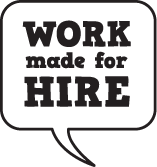How to Tell A Client How Much Something Costs
It seems like telling your clients how much your services cost would be a fairly straight forward process, but a lot of freelancers get jammed up when the question is put to them, and for good reason.
If you answer without asking a few questions of your own, you run the risk of either underpricing your services for the client’s needs or scaring the client away with too big a price tag.
Here’s how to handle the question of “How much do you cost?” with finesse and a ninja’s negotiation skill.
First things, first: you need to understand what anchoring is.
Anchoring is what happens when one person names a number in a negotiation. Regardless of whether that number is well informed and thought out, or thrown out off the cuff, it will now inform how both parties view all other offers.
An example:
Let’s say you have a computer you’d like to sell and I just happen to be in the market for a used computer. I call to learn more about the machine, and you say, “I’d like to sell it for about $500.” You’ve anchored.
$500 is now the most you’ll be able to get for the computer (it makes no sense for me to counter with a higher number, unless I have a deep desire to rid myself of cash). But what if I had more than $500 to spend? You’ll never know because you anchored at $500.
Let’s say I then respond by saying, “Oh, my budget was more like $350.” I’ve now anchored as well; that is the lowest price the computer will sell for if we do the deal. You know I’m willing to spend at least $350 so there is no point in you accepting less than that.
So: sellers generally anchor the highest price and buyers generally anchor the lowest price. You or I might try to move the price in our favor beyond the anchors we’ve dropped but it will be very difficult to do.
Another way of thinking about anchors is as setting expectations. Once those expectations are set, they are very hard to rearrange.
When a potential client writes and asks, “How much would it cost for you to build me a quick website?” anchoring and expectation setting happen almost immediately.
You probably key in on “quick website” and have an idea of what that means to you. You use that idea to come up with a number and shoot it back to the client. You’ve anchored on the price and they’ve anchored on the complexity of the job.
This isn’t good for either of you.
Neither of you have enough information about the job and what it really involves to anchor effectively. If you anchor this early in the process it increases the likelihood that you’ll both be disappointed and frustrated with the result.
So what do you do?
Don’t anchor.
When a client asks you how much your services cost, respond by asking questions about what they need.
You don’t have to get into the nitty gritty, but ask enough questions to understand how big a project they’re talking about, how complex it might be, and how quickly it needs to be done.
If there are things that will increase or decrease the price of the job, mention that. “This estimate is assuming we don’t have any problems with the database; if that were to happen it could increase costs by $500-$600.”
Don’t be afraid to ask about their budget.
It’s OK to ask about money; they’re approaching you about the possibility of paying you in the future. You’re going to talk about money eventually; might as well get started early.
If you understand their budget you’ll be in a better position to present relevant options. You don’t want to show them your Rolls Royce options when their budget is more of a VW Bug. (Or vice versa!)
If they shy away from sharing their budget, explain why you’re asking. Let them know you want to make sure you’re presenting them with options that are realistic given their needs and expectations.
When you do talk numbers, use ranges not specific figures.
You can’t dance around price forever, so when it comes time to talk about numbers, use ranges instead of particular figures. Ranges give you flexibility; if the project is more involved than originally thought, you have room within what they expect to increase the price.
When you offer a range — $3,000 to $5,000 — it’s in your best interest for your current estimation of the project to fit somewhere in the middle to lower portion of that range. If you think the job will cost $3,500, $3,000 to $5,000 is a good range to use. If you think it will cost $4,500, it’s best to give them a range of $4,000 to $6,000 to consider.
By taking the time to ask questions, gather information and strategically respond to potential clients’ questions about how much your services cost, you increase the likelihood of happy customers and better negotiations.
How do you talk to your clients about how much your products or services cost?
Categories: Negotiation Strategy






Very timely article.
I totally agree with the approach to get the most information possible before quoting a range. As a service provider, I take the time to make sure I understand what the client wants to accomplish–note I say “wants to accomplish” not “what they are looking for.” Many times the client doesn’t know what they are looking for — or what budget they should allocate. Some consultants feel like they waste too much time uncovering the real need from the client. Indeed, there is often a long lead time before you actually get the gig. But I think it is well worth it because everyone needs to have realistic expectations. Unlike buying a car or buying a house (which are both GOODS, not services, and where there are many, many published prices) — there is no transparency as to what some services cost. And often the options available are very jargon-y, so the client doesn’t know what he or she needs. I am on the other side now, working on behalf of a client to find another provider. I got the question “what budget did you have in mind” a few times, and I had no idea. One potential provider laid out a scenario, saying “for this amount, I can give you X, Y, and Z.” That was tremendously helpful.
I found this very useful. I’ve struggled with the pricing aspect of my negotiations with clients. This I will start doing right away.
Thank you for posting this!
I recently ran into a snag when, prior to discussion, a prospective client anchored me to a low monthly stipend, for a variety of translation and copy editing services. I was uncomfortable with this, but I still gave the client the green light to send me work samples to complete. My reasoning? It would have been steady work.
I then received the samples with strict instructions: a 48-hour turnaround time, an explanation of all edits, etc. The samples also totaled around 2500 words. I decided to cap the work at 750 words and provide the following: translation from English to Spanish, translation from Spanish to English, proofreading and a few substantive editing suggestions for good measure.
On receipt,the prospective client displeased I hadn’t done all the work and cited “needing to see more proof of proficiency.” I was very glad I’d capped the work at 750 words; completion of the entire sample did not guarantee my getting the project. My takeaway was this:
1) Stick to your guns. I cap sample edits at two manuscript pages, or 500 words. According to my research, this is pretty much the industry standard.
2) Learn what the industry standard is for the scope of work you’re doing (both locally and remotely).
3) Walk away if you can’t see eye to eye. I kindly let my client know what my boundaries were and left an open invitation to contact me if a future need for someone with my skill set should come up.
Being under-pitched is pretty much par for the course in all creative industries. Especially in today’s economy, prospective clients will try to economize. Many of those same clients will turn around and offer you what you’re worth when their penny-pinching earns them a shoddily-done project.
[…] out. You have to be able to independently find the value of your work, set your price point, and convince your clients that it’s worth that much. If you fail to set the boundaries of what you get paid or any other […]